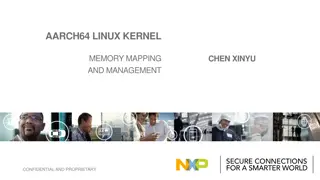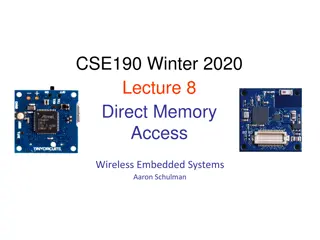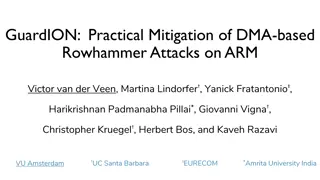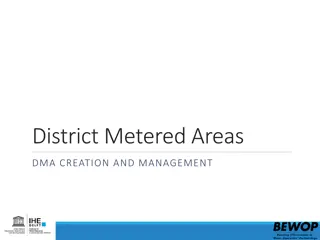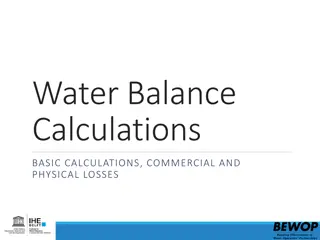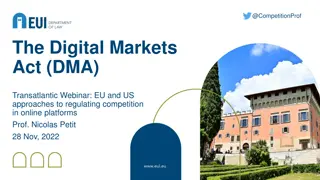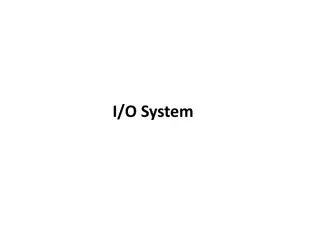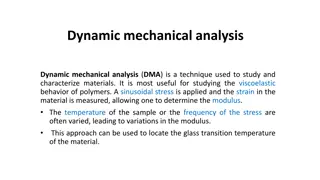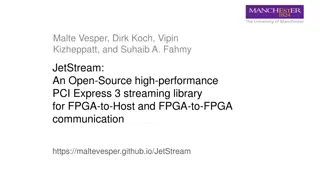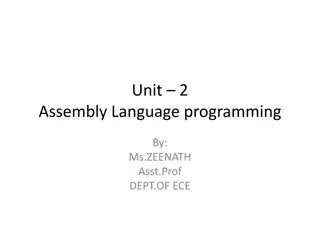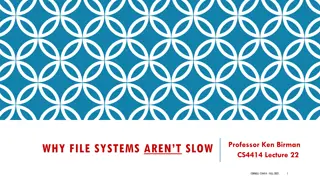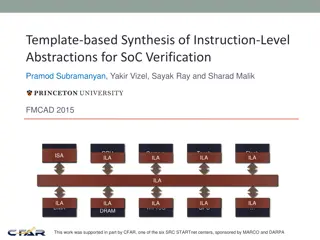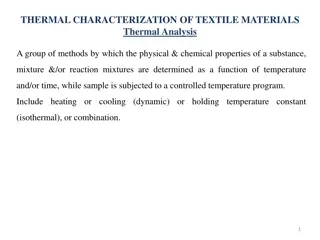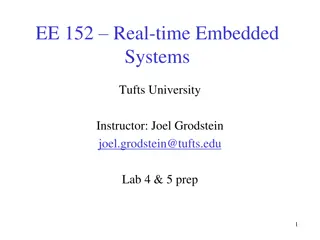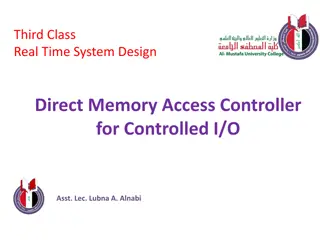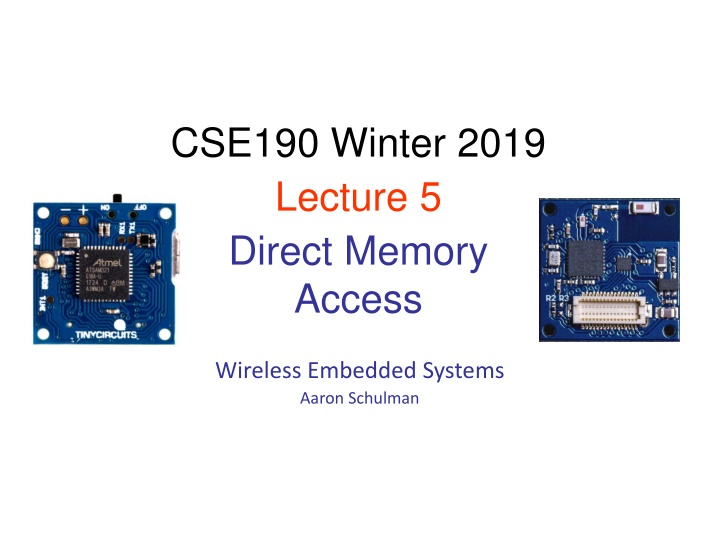
Direct Memory Access (DMA) in Embedded Systems: Benefits and Implementation
Explore the significance of Direct Memory Access (DMA) in wireless embedded systems. Learn why DMA is essential, how it optimizes data transfer, and the role of DMA controllers in the process. Discover how DMA streamlines data transfer and reduces processor intervention for efficient operations.
Download Presentation

Please find below an Image/Link to download the presentation.
The content on the website is provided AS IS for your information and personal use only. It may not be sold, licensed, or shared on other websites without obtaining consent from the author. If you encounter any issues during the download, it is possible that the publisher has removed the file from their server.
You are allowed to download the files provided on this website for personal or commercial use, subject to the condition that they are used lawfully. All files are the property of their respective owners.
The content on the website is provided AS IS for your information and personal use only. It may not be sold, licensed, or shared on other websites without obtaining consent from the author.
E N D
Presentation Transcript
CSE190 Winter 2019 Lecture 5 Direct Memory Access Wireless Embedded Systems Aaron Schulman
Why do we need DMA? Polling and Interrupt driven I/O concentrates on data transfer between the processor and I/O devices. An instruction to transfer (mov datain,R0) only occurs after the processor determines that the I/O device is ready Either by polling a status flag in the device interface or Waits for the device to send an interrupt request. Considerable overhead is incurred, because several program instructions must be executed for each data word transferred.
Why do we need DMA? Instructions are needed to increment memory address and keeping track of work count. With interrupts, additional overhead associated with saving and restoring the program counter and other state information.
Direct Memory Access (DMA) To transfer large blocks of data at high speed, an alternative approach is used. Blocks of data are transferred between an external device and the main memory, without continuous intervention by the processor.
DMA Controller DMA controller is part of the I/O interface. Performs the functions that would normally be carried out by the processor when access main memory. For each word transferred, it provides the memory address and all the bus signals that control data transfer.
DMA Controller Device wishing to perform DMA asserts the processors bus request signal. Processor completes the current bus cycle and then asserts the bus grant signal to the device. The device then asserts the bus grant ack signal. The DMA device performs the transfer from the source to destination address. Once the DMA operations have been completed, the device releases the bus by asserting the bus release signal. Processor acknowledges the bus release and resumes its bus cycles from the point it left off.
Use of DMA Controllers 2. DMA controller requests transfer to memory RAM GPIOs 4. ACK DMA controller Bus control logic 5. Interrupt when done 3. Data is transferred Processor Storage 1. CPU programs the DMA controller
How is OS involved I/O operations are always performed by the OS in response to a request from an application program. OS is also responsible for suspending the execution of one program and starting another. OS puts the program that requested the transfer in the Blocked state, initiates the DMA operation, starts execution of another program. When the transfer is complete, the DMA controller informs the processor by sending an interrupt request. OS puts suspended program in the Runnable state so that it can be selected by the scheduler to continue execution.
Physical vs Virtual Memory Two memory spaces Virtual memory space what the program sees Physical memory space what the program runs in (size of RAM) Virtual memory requires Dedicated hardware on CPU chip called Memory Mgmt Unit (MMU) Cooperation between CPU hardware & operating system Main memory 0: 1: 2: 3: 4: 5: 6: 7: 8: Main memory CPU chip Physical address (PA) 0: 1: 2: 3: 4: 5: 6: Address translation Virtual address (VA) Physical address (PA) CPU MMU CPU 4 4100 4 7: ... ... Source: Bryant & O Hallaron M -1: M-1: Data word 12 Data word
Example: Virtual and Physical Address Space add r1,r2,r3 0x00 0x00 add r1,r2,r3 sub r2,r3,r4 0x04 0x04 sub r2,r3,r4 lw r2, 0x04 0x08 0x08 lw r2, 0x04 mult r3,r4,r5 0x0C 0x0C mult r3,r4,r5 bne 0x00 0x10 add r10,r1,r2 0x14 sub r3,r4,r1 0x18 sw r5,0x0c 0x1C 13
Cache coherency problems Imagine a CPU equipped with a cache and an external memory that can be accessed directly by devices using DMA. When the CPU accesses location X in the memory, the current value will be stored in the cache. Subsequent operations on X will update the cached copy of X, but not the external memory version of X, assuming a write- back cache. If the cache is not flushed to the memory before the next time a device tries to access X, the device will receive a stale value of X.
Buffers and Arbitration Most DMACs have a data storage buffer network interfaces receive data from main memory at bus speed, send data onto network at network speed. Bus Arbitration is needed to resolve conflicts with more than one device (2 DMACs or DMA and processor, etc..) try to use the bus to access main memory.
Bus Arbitration Bus Master the device that is allowed to initiate bus transfers on the bus at any given time. When the current master relinquishes control, another device can acquire this status. Bus Arbitration the process by which the next device to become bus master is selected and bus mastership is transferred to it.
Arbitration Approaches Centralized a single arbiter performs the arbitration. Distributed all devices participate in the selection of the next bus master.

